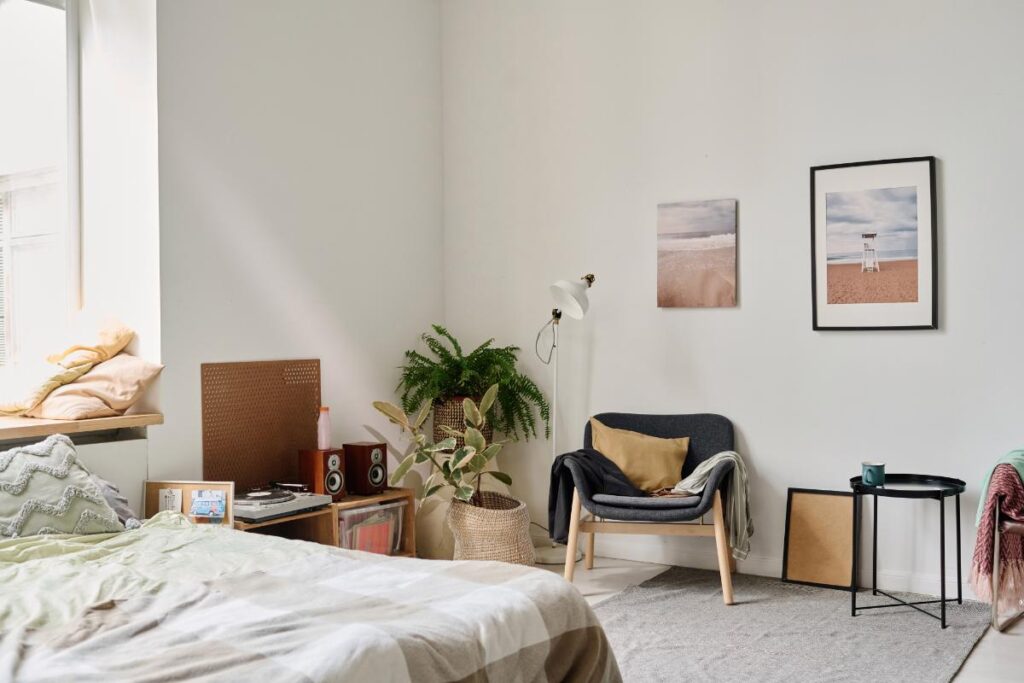When caring for someone living with dementia, the physical environment matters more than we often realize. A chaotic, overstimulating, or cluttered space can increase anxiety, confusion, and even behavioral symptoms. In contrast, a calming environment can help ground your loved one, reduce stress, and support a sense of comfort and safety.
Creating a dementia-friendly home doesn’t require major renovations. Small, thoughtful adjustments can make a powerful difference in daily life.
Here’s how to design a space that brings calm, clarity, and dignity to your loved one’s care.
Why Environment Matters in Dementia Care
Dementia affects the brain’s ability to process sensory input. Things like loud noises, bright lights, harsh shadows, or sudden changes in layout can feel overwhelming or disorienting. A calming space provides visual and emotional cues that help the person feel more in control and less anxious.
It’s not just about safety—it’s about emotional well-being. A peaceful environment honors the person’s humanity, reduces frustration, and supports moments of joy and connection.
Tips for Creating a Calming, Dementia-Friendly Space
- Simplify and Declutter
Clutter can cause visual confusion and make it difficult for someone with dementia to focus or relax. Remove unnecessary objects, minimize decorative noise, and keep surfaces clear. Store frequently used items in predictable, visible places. - Use Soft, Warm Lighting
Bright, clinical lighting can feel jarring. Aim for warm, ambient light instead. Use table lamps, natural daylight, and dimmable fixtures when possible. Avoid harsh overhead lights or strong contrasts between light and shadow, which can cause confusion. - Choose Soothing Colors
Color affects mood. Opt for muted, natural tones—like soft blues, gentle greens, and warm earth shades. Avoid bold, highly saturated colors unless using them for wayfinding or object contrast (like a red plate on a white table). - Incorporate Familiar and Personal Items
Familiar objects, family photos, and comforting textures can reduce stress and evoke positive memories. Consider a favorite chair, a well-loved quilt, or framed images of meaningful places. These items bring a sense of “home” into every room. - Reduce Noise and Overstimulation
Background noise—like television chatter, ticking clocks, or multiple conversations—can be overwhelming. Choose soft background music or nature sounds if audio is helpful. Use rugs, curtains, and soft furnishings to absorb noise and reduce echo. - Use Clear Pathways and Visual Cues
Make sure rooms are easy to navigate. Avoid obstacles or tripping hazards. Use contrast to make important items stand out (e.g., a dark rug under a light table). Consider visual prompts like signs or labels if your loved one benefits from them. - Create a Sensory Corner
Set up a small space for sensory comfort. This might include a weighted blanket, textured fabrics, essential oils, or soft music. It can be a place to unwind, regulate emotions, or engage in a calming activity like folding towels or coloring. - Support Sleep with a Restful Bedroom
Create a consistent bedtime routine supported by an environment that promotes relaxation. Use blackout curtains, reduce ambient light, and avoid electronics near bedtime. Keep bedding soft, familiar, and temperature-appropriate.
Optional: A Daily Lighting Rhythm

If possible, follow the natural light rhythm of the day—bright in the morning, warm and dim in the evening. This helps regulate circadian rhythms and can reduce sundowning symptoms (late-day confusion or agitation).
A Few Words on Scent and Touch
Our senses are powerful pathways to emotion. Gentle scents like lavender or vanilla can offer calm when used carefully (avoid strong or synthetic fragrances). Soft, comforting textures—from cozy socks to fleece throws—can create a soothing tactile experience.
Final Thoughts
You don’t need to remodel your entire home to make a difference. Even a few changes—like turning down the volume, simplifying the space, or swapping fluorescent bulbs for soft white lamps—can create a more peaceful environment for your loved one.
Ultimately, a calming environment says this: You are safe here. You are loved. You are home.
And in dementia care, that message can mean everything.



